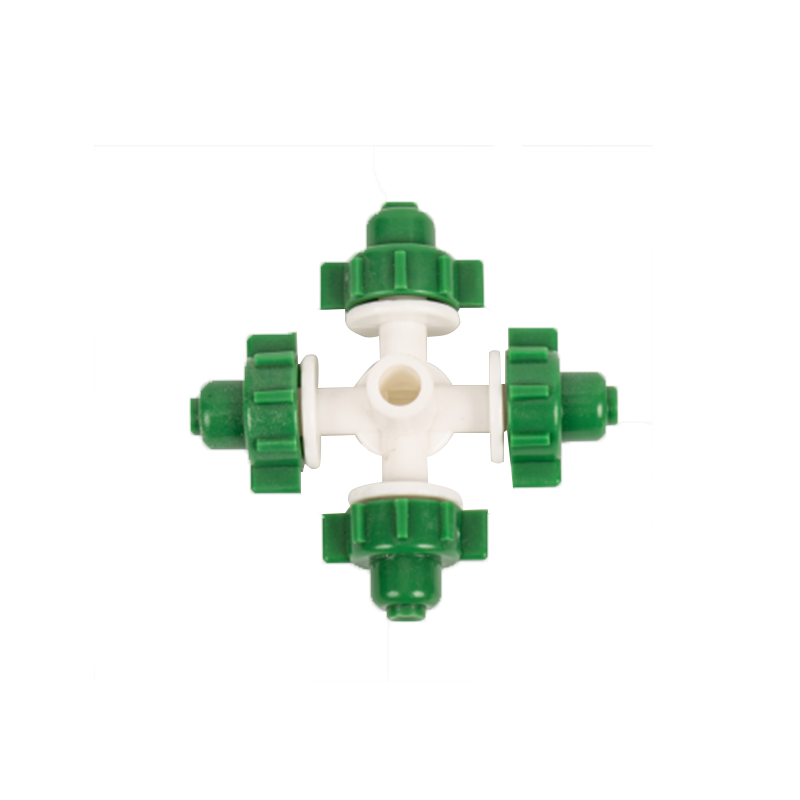 By Admin
By Admin Installing and maintaining irrigation micro sprinklers properly is crucial for ensuring their longevity and effectiveness. Here's a guide to help you:
1. Installation: Plan and Design: Initiate the installation endeavor by conducting a meticulous site analysis encompassing soil composition, topographical features, plant species, and water source characteristics. Employing this data, draft an irrigation blueprint tailored to the unique requirements of the site, emphasizing water conservation, efficiency, and plant health. Factor in considerations such as slope, drainage patterns, and sun exposure to optimize water distribution and minimize runoff.
Select Appropriate Components: Prioritize the procurement of premium-grade components meticulously selected to align with the specifications and demands of the irrigation system. Engage with reputable suppliers or manufacturers renowned for their commitment to quality, reliability, and innovation. Assess the compatibility, durability, and performance attributes of micro sprinklers, tubing, fittings, filters, pressure regulators, and other ancillary components to ensure seamless integration and long-term functionality.
Prepare the Area: Prior to commencing installation activities, undertake comprehensive site preparation measures to establish an optimal environment conducive to the successful deployment of the irrigation system. Clear the designated area of vegetation, rocks, debris, and any impediments that could impede progress or compromise system integrity. Employ grading or leveling techniques as necessary to rectify uneven terrain and facilitate uniform water distribution.
Install Main Water Supply Line: Lay the foundation for the irrigation network by installing a robust main water supply line capable of delivering consistent water pressure and volume to the entire system. Employ industry-standard piping materials, fittings, and connection methods to ensure structural integrity, leak resistance, and longevity. Incorporate filtration, backflow prevention, and pressure regulation mechanisms to safeguard against contamination, clogging, and pressure fluctuations.
Lay Out Tubing: Systematically lay out the irrigation tubing in accordance with the predetermined design specifications, adhering to established spacing guidelines and alignment parameters. Employ meticulous attention to detail to minimize friction losses, pressure differentials, and flow restrictions throughout the tubing network. Utilize appropriate fastening methods such as stakes, clamps, or anchors to secure the tubing in place while accommodating variations in terrain and landscape features.
2. Maintenance: Regular Inspection: Institute a rigorous regime of routine inspections and assessments aimed at proactively identifying, diagnosing, and addressing potential issues or deficiencies within the irrigation system. Conduct visual inspections of all system components, including tubing, fittings, valves, filters, and micro sprinklers, to detect signs of wear, corrosion, leaks, or malfunctions. Leverage advanced inspection tools and diagnostic equipment to facilitate thorough analysis and condition monitoring, documenting findings and observations for reference and analysis.
Clean Filters: Implement a proactive filter maintenance program to mitigate the risk of clogging, sediment accumulation, and filtration inefficiencies within the irrigation system. Establish regular intervals for filter inspection, cleaning, and replacement based on system demands, water quality parameters, and environmental conditions. Employ appropriate cleaning agents, flushing techniques, and backwashing procedures to dislodge debris, algae, biofilms, and other contaminants obstructing filter media and impeding water flow.
Adjust Sprinklers: Regularly assess the performance and functionality of micro sprinklers through systematic evaluation of coverage, distribution patterns, and water application rates. Employ precision measurement tools, such as catch cans, flow meters, and distribution uniformity testers, to quantify the effectiveness and uniformity of water distribution across the irrigated area. Fine-tune the alignment, trajectory, and flow characteristics of individual micro sprinklers as needed to optimize water efficiency, minimize overspray, and address localized deficiencies or irregularities.
YR9822A 4 way micro atomizing sprinkler head
